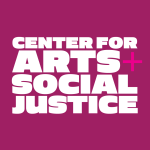Shannon Cleere
Visual Art
2024
Dirty clothes strewn across the floor, a sink teeming with dishes bearing the remnants of last night’s dinner, and a bathtub coated in soap scum and hair—these scenes resonate with anyone responsible for the upkeep of their home, and will for many, undoubtedly, ignite feelings of dread. The work never ends. Domestic labor, relentless and unavoidable, is essential to the well-being of families but also indispensable to the functioning of the world’s economies. Disproportionately conducted by women, unpaid domestic labor is the supporting framework on which American capitalism sits.
However, in the United States, there is a blatant disregard for the value of domestic labor. Parents are not provided with government-subsidized assistance; no guaranteed paid parental leave, no universal healthcare, and no state-subsidized childcare exists. Individuals with families are left to navigate these challenges independently, to fend for themselves. As Angela Garbes, author of Essential Labor: Mothering as Social Change, stated during her talk with Terry Gross on Fresh Air, “America doesn’t have a social safety net; America has mothers.”
Housework is presented as inherently feminine work, innate and fitting to women both physically and psychologically. Women are thus persuaded, even coerced, into believing that housework is a natural and inevitable pursuit. Often, women who don’t willingly embrace the conventional role of mother and housewife, or who don’t inherently enjoy housework, are framed as abnormal, as outliers. Planting the notion that women are predestined for marriage, childbirth, and caretaking, any resulting guilt or shame they might feel by not embracing these expectations is a natural consequence of their failure as women. In Living a Feminist Life, author Sara Ahmed suggests that there is a cultural imperative for women to be happy and that they are made to believe they will be fulfilled by adhering to societal expectations. Women’s bodies, labor, and emotional capabilities are repeatedly exploited in the relentless pursuits of capitalist accumulation. They give birth to children, thus supplying the capitalist system with future workers. They clean, feed, and provide these children with the emotional support and care they require to become capable adults who will one day enter the workforce. Through this sexual division of labor, capitalism naturalizes exploitation and inequality as ways of being.
In support of Cleere’s research, to build a critical framework for feminist theory, Cleere read works by feminist activists and scholars such as Silvia Federici and Russian revolutionary Alexandra Kollontai. In her studio practice, Cleere references the work of feminist artists such as Mary Kelly, Jenny Holzer, Martha Rosler, and Barbara Kruger. Experimenting with printmaking, text, photography, and installation, Cleere presents domestic scenes synonymous with life as a woman and a mother. Cleere attempts to convey the arduous nature of unpaid domestic labor, the sexist expectation that, as a woman, Cleere is naturally suited to it, and to make explicit the unpaid quality of the work.
As Cleere pursues this project, she intends to continue implementing collective inquiry as a critical component of her research. Cleere first implemented this approach upon learning about social practice and interventionist artists, artists whose work exists in the public sphere. These include John Malpede of the Los Angeles Poverty Department; Rick Lowe, painter and founder of Houston’s community-based organization Project Row Houses; and Mierle Laderman Ukeles, the feminist maintenance artist whose work interferes with class assumptions and societal norms placed on women, people of color, and people of lower socioeconomic status. These artists are facilitators, providing the public with opportunities to engage on issues affecting their communities and tools that empower people to act. Inspired by these artists, Cleere volunteered with a Seattle-based homeless services organization and Planned Parenthood, working side-by-side with people in Cleere’s community committed to making a positive difference. This facet of Cleere’s practice gives context to her work; it helps her develop personal connections and identify her work’s potential for positive social impact. It helps Cleere make relevant work.
As she proceeds, she wants to engage with a more varied audience on this topic. It is essential to understand how women’s issues, such as domestic labor, intersect with race, ethnicity, class, and culture. Cleere’s work on this topic thus far includes engagement exclusively with adult women who are mothers. Cleere wants to connect with a younger generation of females, girls her teen daughters’ age who have yet to make life-changing decisions regarding higher education, career, and family. As a young woman, Cleere didn’t fully grasp how she was categorized and controlled according to gender. She hopes her work can interrupt this cycle with a younger generation of women. Ostensibly, their perspective will influence her decisions concerning her finished artworks: the sources of her imagery or the content, for example. In other words, their perspective will help Cleere make more conscientious and sensitive decisions regarding intent, materials, and methods by which Cleere employs in practice.
If Cleere is successful, her audience will see that societal norms and expectations support the social, political, and economic power systems responsible for our oppression. These social constructs should not dictate the quality of the love or the impact of the work we devote to our families and communities. If anything, they are the very entities that detract, even obstruct, our ability to live according to our needs and desires.
Explore More 2024 Fellows
Alexis Powell
Writing for Children & Young Adults
B.K. Zervigón
Music Composition
Beste Filiz
Writing for Children & Young Adults
Chris Lange
Graphic Design
Christine Hartman Derr
Writing for Children & Young Adults
Hannah Ban
Writing for Children & Young Adults
Jonathan Jackson
Film
Joor Baruah
Film
Shannon Cleere
Visual Art

